S.A. Crow's Blog, page 3
May 29, 2024
May Milestones to June Ambitions: S.A. Crow Reflects and Plans
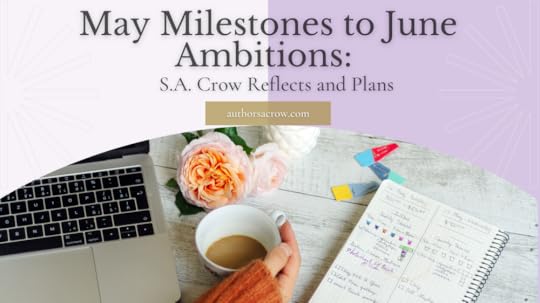
I'm romance suspense novelist of the Fire series and owner of the publishing company Black Bird Books Publishers. You can find my urban fantasy noir mystery series written under my other pen name Ann Crow.

You can join my community if you're reader or as a writer/author.
This blog post is about reflecting on how May went for me and setting goals for June 2024. As you work on your dreams and goals, it's important to look back and see how far you've come. Sometimes that view gives you the much-needed push to keep moving forward.

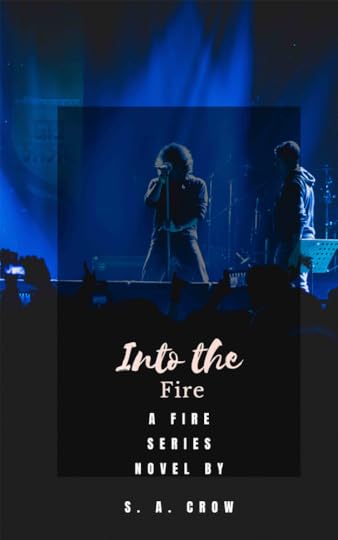
Into the Fire 2nd edition is up on Amazon, the paperback version will be up soon there and other sites hopefully soon.
I've also started the revision of The Fire Inside 2nd edition it should be ready in mid-June so keep your eyes out for cover ideas and updates on my social media.
My new editing routine has sped up the time it takes to edit a chapter.
I've been watching tv shows and movies from Asia and Southeast Asia which has given me new perspectives on writing and culture. These have also inspired a few story ideas which I'm happy to inform you all that I have been making notes on them, so they will be on my draft stage list sometime soon.
I've started learning the Cranberries song "Zombie" on the guitar. It's been stretching my fingers and my brain which makes me so happy.

I and the dogs have begun a walking schedule. This beneficial addition to my workout routine is helping me address my fatty liver disease.
 Community Engagement
Community EngagementSadly. someone hacked my Instagram account. Instead of dwelling on the problem, I've taken action against the hacker with Instagrams' help and I created a new account. So, if you followed my old Instagram, stop following that account and join me here.
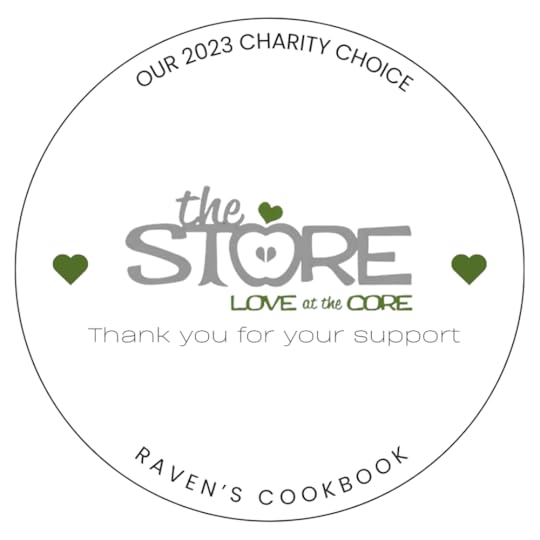
I did a charity live stream to raise awareness on our charity of the year and our cookbook, "Raven's Cookbook Vol. 3"
https://youtube.com/live/tEPfwpvV4cs?feature=share

I've worked on the writing group On the Wings for Writers' Book giveaway. We'll be emailing authors to see if they will join us. I would love to hear of any indie authors you would like to see join this giveaway.
I've made a freebie for my newsletter readers! If you haven't signed up for my newsletter do that today so you don't miss out.
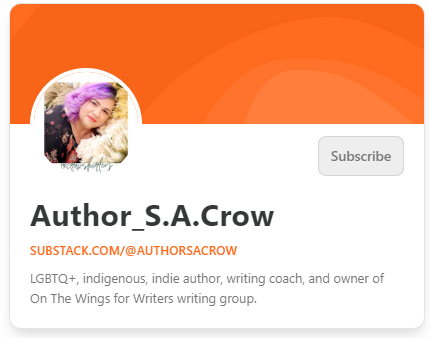

I've created some new merch in the store. Drop by and get your mugs, stickers, and more.

I finished reading Royal Boy (Care Inc. #1) by Hannah Morse.
Started Reading Building a Non-Anxious Life by Dr. John Delony
Celebrated Buddha's birthday by washing my Buddha statue and taking a cleansing bath.

I've watched
The Director that Buys me Dinner
I'm also surviving the powerful storms rolling through the north Texas area. Our back porch awning didn't make it.
 Goals for June
Goals for June Writing Objectives
Writing Objectives

I'm on the editing phase of the writing cycle. I'll be finishing the edits for the 2nd edition of "The Fire Inside" and adding the story to the box set eBook "Burning Desires".
If I finish that project, I will start on the novella "Small Embers", a prequel to the Fire series.
Q3 sticker pack for planners
Launch project for "Burning Desires," "The Fire Inside," and "Small Embers."
Email authors to take part in We Wish you a Merry Bookmas Giveaway.
Grow my Marketing reach
Date Myself
Continue to find fresh additions to my health routine
Learn to play the song "Zombie"
My word of the month is Tranquility
Creating the charity list for On the Wings for Writers to vote on for the 2024 "Raven's Cookbook."
Q3 plan for On the Wings for Writers
June 1st Thursday community video
Writing Sprint Lives on YouTube
Tea Time with S. A. Crow live on YouTube
Arlington Pride event
Share social media support for the Author of the Month
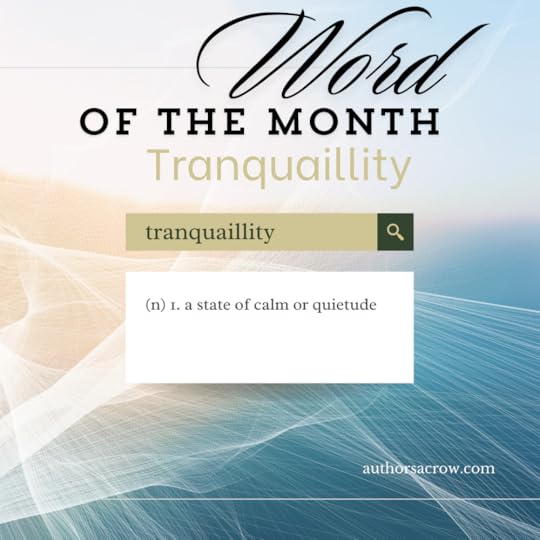
Follow me on social media and YouTube for more frequent updates.
Next Week's Blog post
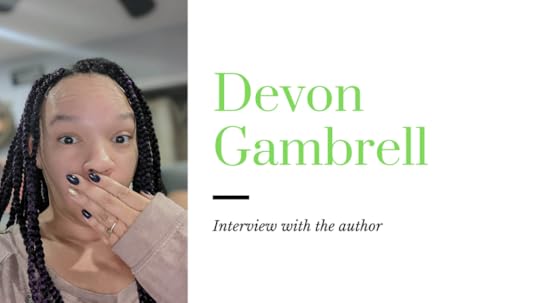
Check out the new edition of "Into the Fire" book 1 of the Fire series, Travis and Raven's story.
The latest novel in the Fire series "If the Seas Catch Fire," is out now. This is Steve and Mallory's story.
You can get the free download of "Code of Fire"
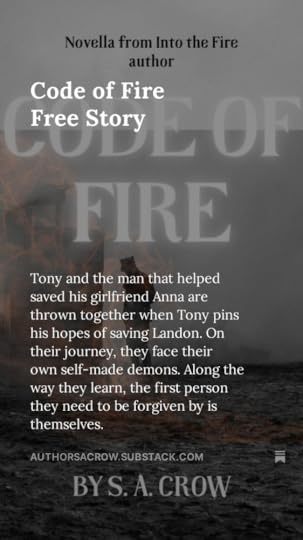
Also writers and authors check out my "The Bookend Revision Technique" resource book today!
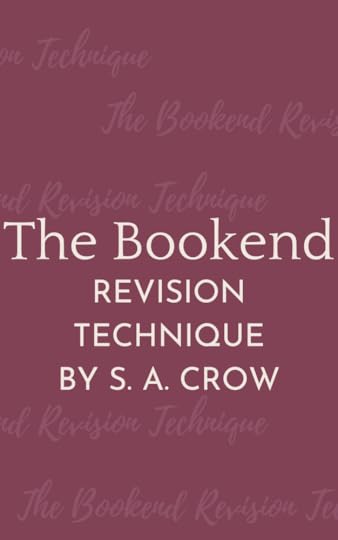
Check here for my Planners and other printables! Keep a lookout for my Q3 sticker set coming soon.
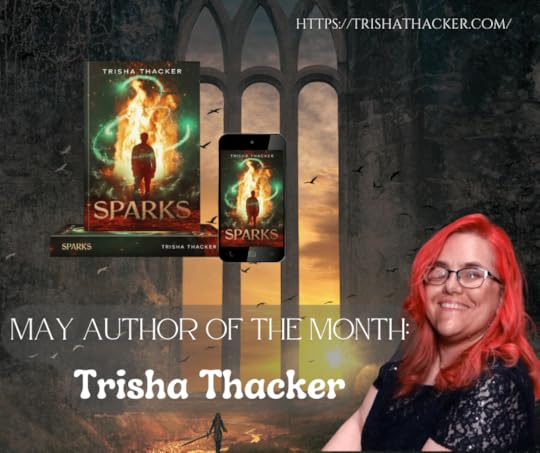
May 22, 2024
Unlocking the Secrets to Memorable Characters in Literature:
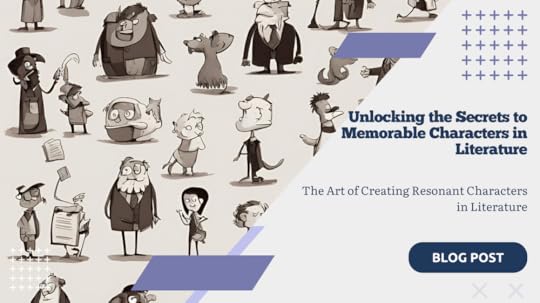
I've been inspired by dreams - I've even stolen scenes or images or characters from them.
-- Neil Gaiman
Today's blog delves into the art of creating characters who will deeply resonate with your readers. We'll explore techniques, common pitfalls, and take a look at some examples, I aim to help writers with some tools and insights to craft your dream characters. This guide will help seasoned authors or aspiring writers.
Characters are the heart and soul of your story. They are conduits for your readers to experience the narrative and world. It's so vital to craft compelling, memorable stories. They foster emotional connections, drive the plot, enhance the reading experience, and leave your reader with a lasting impact, all of this makes them essential.
Let's get into what makes a character memorable, techniques, pitfalls, examples, and the importance of creating resonant characters.

Your characters are a path for your readers to experience the narrative, which makes creating resonant characters paramount. Here's why developing this type of character crucial:
Emotional Connection
When a reader forms an emotional bond with a character or characters (ship), they are more invested in the story. You want your characters to evoke empathy, sympathy, and even antipathy (antagonists) to keep your readers turning pages and asking questions.
Reader Engagement and Retention
Memorable characters are memorable, they stick with readers long after the last page. This can lead to higher reader retention, return readers, and loyalty of readers. A strong character can turn a new reader into a lifelong fan, who's eager to read more of your future work.
Relatability and Identification
Stories with relatable characters allow readers to see the story through their own experiences, struggles, and triumphs that are mirrored in the characters. Readers having a sense of identification and personal connection is the best compliment you can get.
When readers see themselves in a character, the story becomes more real and impactful.
Enhancing the Plot
The phrase character-driven story is where a well-developed, resonant character drives the plot forward in meaningful ways. You should know your characters so well you can drop them in any plot and know how they will behave and solve problems. A plot centered around strong characters is more dynamic and compelling, making the story more enjoyable.
Emotional and Intellectual Impact
Characters that provoke thoughts and stir deep emotions in readers challenge readers' perspectives, inspire change, and provide comfort or catharsis. Dealing with complex issues and human experiences will leave a profound impact on readers.
Building a Rich Literary World
This type of character contributes to the story's world, giving it richness and believability. They interact with the setting, other characters, bringing the entire narrative landscape to life. A world populated by well-crafted characters feels authentic and immersive.
Creating characters that resonate with readers is vital for crafting compelling, memorable stories. These characters foster emotional connections, drive the plot, enhance the reading experience, and leave a lasting impact, making them essential to successful storytelling.
Now that we know why this type of character is so important let's get into how to make memorable characters.
A resonant character is one who evokes a strong emotional response or connection with readers. They are often relatable, authentic, and has an impact on the story. They aren't just well-crafted characters but resonate with the readers on a deeper level, leaving an impact on the reader.
Characteristics of memorable characters are; relatability, depth and complexity, growth and development (character arc), distinctive voice and style, strong motivations and goals, consistency and reliability, distinct relationships, inner conflicts and contradictions, symbolic significance, and resonance and impact.
1. Relatability
Human Flaws: Memorable characters often possess flaws and imperfections that make them more human and relatable. These flaws can range from minor quirks to significant weaknesses, but they help readers see the character as a real person.
Authentic Emotions: Characters that display genuine emotions, such as love, anger, fear, and joy, resonate deeply with readers. Authentic emotional responses make characters more relatable and engaging.
2. Depth and Complexity
Detailed Backstories: A well-developed backstory provides context for a character's actions, motivations, and personality. This history adds layers of depth and makes the character feel more real.
Multifaceted Personalities: Memorable characters are not one-dimensional. They have a range of traits and behaviors that can sometimes contradict each other, reflecting the complexity of real people.
3. Growth and Development
Character Arcs: Memorable characters undergo significant development throughout the story. This growth can be physical, emotional, or psychological, showing how experiences shape and change them.
Lessons Learned: Characters who learn and evolve from their experiences are compelling. Their journey toward self-discovery or achieving goals makes their story arc satisfying for readers.
4. Distinctive Voice and Style
Unique Voice: A character with a distinctive way of speaking or thinking stands out. This voice can be reflected in dialogue, inner monologues, and narrative style.
Personal Style: Memorable characters often have unique physical traits, mannerisms, or fashion choices that make them easily identifiable and distinct.
5. Strong Motivations and Goals
Clear Objectives: Characters with well-defined goals and motivations drive the story forward. Their desires and ambitions create conflict and tension, engaging readers.
Purposeful Actions: Memorable characters take actions that align with their motivations, making their decisions and behaviors logical and compelling.
6. Consistency and Reliability
Predictable Behavior: While characters can and should grow, their core personality traits should remain consistent. This consistency helps readers understand and predict the character's actions.
Reliability in Character: Even if a character is unreliable in the story's context (e.g., an unreliable narrator), their characterization should be reliably crafted to maintain believability.
7. Distinct Relationships
Interpersonal Dynamics: Memorable characters often have rich, complex relationships with other characters. These dynamics can reveal different facets of their personality and add depth to their portrayal.
Impact on Others: Characters who significantly affect those around them, whether positively or negatively, tend to be memorable. Their interactions can drive the narrative and contribute to character development.
8. Inner Conflicts and Contradictions
Internal Struggles: Characters who grapple with internal conflicts, such as moral dilemmas or emotional turmoil, are intriguing. These struggles add depth and relatability.
Contradictory Traits: Memorable characters often have contradictory traits, such as a brave warrior who fears public speaking. These contradictions make them more complex and realistic.
9. Symbolic Significance
Embodiment of Themes: Characters who embody the themes or messages of the story often leave a lasting impression. Their actions and development can reflect broader societal or philosophical concepts.
Archetypal Qualities: While avoiding clichés, characters with archetypal qualities (e.g., the hero, the mentor) can be memorable when given unique twists that set them apart.
10. Resonance and Impact
Emotional Impact: Characters that evoke strong emotional responses, whether it's love, hate, or empathy, tend to be memorable. Their ability to move readers emotionally ensures they are not easily forgotten.
Lasting Influence: Characters that inspire readers, provoke thought, or leave a lasting impression are often remembered long after the book is closed. Their influence can extend beyond the pages of the book.
Incorporating these characteristics into your characters can help create memorable, resonant figures that captivate and engage readers, making your stories more impactful and enduring.
Techniques for Creating Resonant CharactersDeep Character Development
craft detailed backstories
understand character motivations and desires
utilizing character arcs for growth and transformation
Relatability and Authenticity
creating characters with flaws and vulnerabilities
using real-life inspiration to enhance authenticity.
balancing relatability with uniqueness.
Strong Voice and Perspective
developing distinctive character voices.
using first-person vs. their-person perspectives
techniques for internal monologues and thoughts
Show, Don't Tell
demonstrating traits through actions and dialogue
avoiding info-dumps and unnecessary exposition
using subtext and implications
Supporting Cast
crafting compelling secondary characters
dynamics between primary and secondary characters
role of secondary characters in highlighting main character traits.
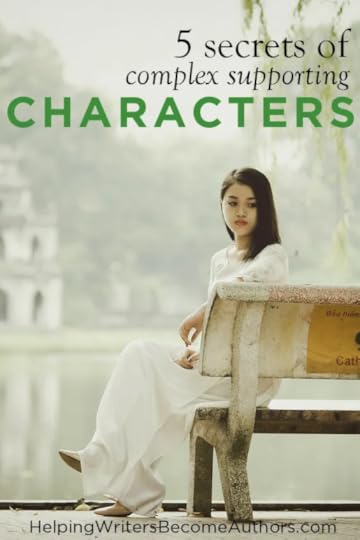 Common Pitfalls in Character Creation
Common Pitfalls in Character Creation Stereotypes and Cliches
identifying and avoiding common stereotypes
techniques for creating fresh, original characters
One-Dimensional Characters
recognizing signs of flat characters.
adding complexity and depth.
Inconsistent Characterization
maintaining consistency in character behavior and traits
tools for tracking character development throughout the story
Overcomplication
avoiding overloading characters with traits and backstory
balancing detail with readability
Some authors use tools to help them create characters and help consistency. Many authors, including myself, use Myers-Briggs Personality Types. Others choose Enneagram model to create and keep track of their characters. Then some other authors use western zodiac or Chinese zodiac to develop characters.
Examples from LiteratureClassic Examples
Elizabeth Bennet (Pride and Prejudice by Jane Austen) Elizabeth Bennet is relatable because of her human flaws and strengths. She is intelligent, witty, and independent, yet she can be quick to judge and somewhat stubborn. These traits make her feel like a real person with whom readers can identify.
Jay Gatsby (The Great Gatsby by F. Scott Fitzgerald) Gatsby's internal conflict between his idealized vision of Daisy and the reality of who she is creates a powerful tension. His inability to reconcile his dreams with reality is a key aspect of his character.
Elizabeth and Jay resonate with readers because of their rich, multifaceted personality's, emotions, and character arcs. Their stories and themes continue to captivate readers, offering timeless insights.
Contemporary Examples
Katniss Everdeen (The Hunger Games)

The Weasleys (Harry Potter by J. K. Rolling)
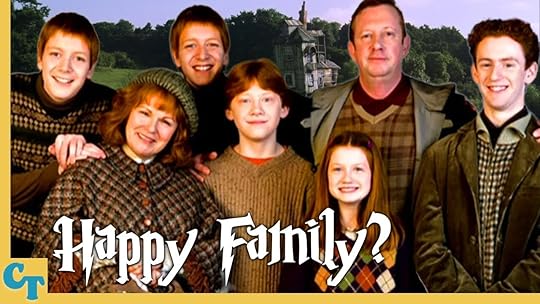
Crafting characters that resonate with readers is both an art and a science. Inspired by dreams, personal experiences, and the intricacies of human nature, as Neil Gaiman wisely noted, "I've been inspired by dreams - I've even stolen scenes or images or characters from them." This blog delves into the essential techniques, pitfalls, and examples that help writers develop memorable characters who captivate and engage their audience.
Characters are the heart and soul of your story, serving as the conduits for readers to experience the narrative and world you've created. They foster emotional connections, drive the plot, enhance the reading experience, and leave a lasting impact. This makes them essential to successful storytelling.
Throughout this guide, we’ve explored the importance of creating characters that resonate with readers. By forming emotional bonds, engaging readers, and offering relatability, well-crafted characters enrich the narrative and make your story unforgettable. Understanding what makes a character memorable, including their depth, growth, voice, motivations, and relationships, provides the foundation for creating compelling characters.
From the timeless charm of Elizabeth Bennet in "Pride and Prejudice" to the tragic allure of Jay Gatsby in "The Great Gatsby," we see how iconic characters resonate deeply with readers through their complexity, authenticity, and emotional journeys. Whether you’re a seasoned author or an aspiring writer, the insights and techniques shared here will help you bring your dream characters to life, creating stories that leave a profound impact on your readers.
As you embark on your character creation journey, remember that the most memorable characters are those that evoke strong emotional responses, inspire thought, and leave a lasting impression. By incorporating these elements into your writing, you can craft characters that stand the test of time and captivate the hearts and minds of your readers.
Here are some character blogs you might want to read.
Steve Martin , Character Interview
So You Want to Create a new Character
This is a great resource for creating characters and settings OneStopforWriters.com

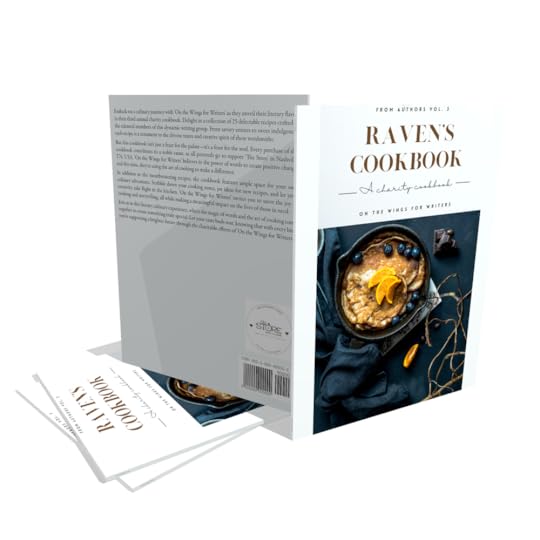

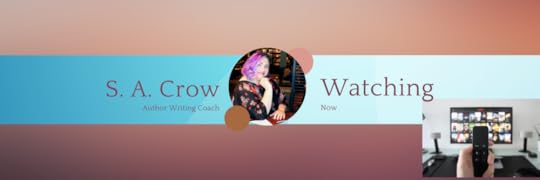
Dear Doctor, I'm Coming for Soul
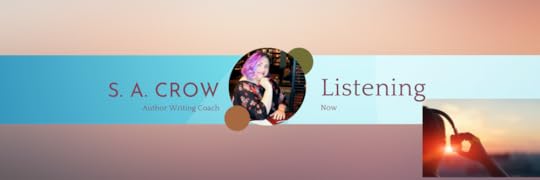


May 14, 2024
In the Footsteps of Steel: S.A. Crow's Tribute to Danielle Steel in 'Wanderlust

Authors who Inspire me series.
Today we will be discussing another author who inspired me become the author I am today. You can find the other articles in this series:
Exploring the Legacy of E. A. Poe
Unveiling the Literary Tapestry: Amanda Quick
The Influences of Beatrice Small’s O’Malley Saga on My Writing Journey
I’m an indie LGBTQ+ author and publication company owner. I write romance suspense as S. A. Crow and urban fantasy noir mystery under the pen name Ann Crow. Reading and storytelling have always been a huge part of my life from an early age. Both sides of my family were readers and not only did they read to me but they let me pick out my reading material. My father was a biographic and sci-fi reader, where my mother and grandmother often read romance novels. So, it’s no surprise that I picked up romance novels at an early age.
If you've ever glanced at the romance section in a bookstore, chances are you've come across Danielle Steel's name due to the large number of titles she has written. Sadly, I’ve only read one novel of her’s but it’s stuck with me long after that initial read.
Wanderlust is the story of Audrey Driscoll. Orphaned young, Audrey has grown up caring for her eccentric millionaire grandfather and her demanding younger sister, Annabelle, who assume she will always be there for them. Sheltered yet restless, responsible beyond her years yet hungering for experience, Audrey is hopelessly bound until she herself makes the daring decision to leave. As the 1930s unfold, alone, camera in hand, she will shock friends and outrage family as she plunges headlong into the wider world.
Crossing the Atlantic aboard the luxurious Queen Mary, Audrey meets James and Violet Hawthorne, who will draw her into a sophisticated circle of artists and expatriates. And it is they who will introduce her to Charles Parker-Scott, in who Audrey will come to recognize a twin soul, a man propelled by relentless curiosity and driven by conflicting needs for intimacy and independence. Together they will spend an exquisite summer at Cap d'Antibes, then board the Orient Express on an adventure that will carry them to a remote outpost in China. But at the farthest reaches of this journey Aubrey must choose again. Japan has attacked China. Charles knows he must return to Europe at once. But Audrey becomes involved with a besieged orphanage and decides to remain in China without Charles, caring for the abandoned children until help arrives.
In time Audrey will return to America with a daughter of her own. While she must come home to San Francisco to confront a world irrevocably changed by time, she finds she cannot stay. From prewar Germany to London during the Blitz, from a wrenching reunion with Charles to a war zone in North Africa, again and again she must choose between the dictates of her conscience and the yearnings of her heart. For Audrey Driscoll and the men and women whose lives touch hers, wanderlust is the inescapable element. Born at a time when women were expected to stay close to home and fulfill traditional roles, Audrey is compelled to follow the thread of events that will destroy the complacency of the past and shape the future. From Europe to China, from San Francisco to North Africa, she is irresistibly drawn into a man's world of conflict, discovery, and danger.
One of the most prolific and widely read authors of contemporary literature, with a career that spans several decades. Her first novel, “Going Home,” published in 1973, marks the beginning of a remarkable career that includes over 100 novels. Steel’s popularity is not only tied to the sheer volume of titles but her stories enduring and widespread appeal across diverse audiences.
Steel's writing style is characterized by its accessibility, emotional depth, and immersive storytelling. She is known for crafting compelling narratives that explore themes of love, family, resilience, and the human spirit. Through her keen insight into the complexities of human relationships, Steel has captured the hearts of millions of readers around the world.
Her novels have been translated into numerous languages and adapted into various forms of media, like television movies and miniseries.
"Now and Forever" (2001) - Based on the novel of the same name, this TV movie follows the story of a woman who struggles to find love and happiness amidst family conflicts and personal challenges.
"Jewels" (1992) - Adapted from the novel "Jewels," this miniseries spans generations and continents, chronicling the lives of a family of Russian aristocrats and their descendants.
"Daddy" (1991) - This TV movie is based on the novel "Daddy," exploring themes of love, loss, and redemption as a woman navigates the complexities of family relationships.
"Fine Things" (1990) - Adapted from the novel "Fine Things," this TV movie follows the journey of a successful businessman and his quest for love and happiness.
"Kaleidoscope" (1990) - Based on the novel "Kaleidoscope," this TV movie tells the story of three sisters who face adversity and find strength in each other as they navigate life's challenges.
"Changes" (1991) - This TV movie is based on the novel "Changes," exploring the intertwined lives of three women as they confront love, loss, and new beginnings.
"Zoya" (1995) - Adapted from the novel "Zoya," this miniseries follows the journey of a young Russian woman who escapes revolution and finds love and adventure in America.
"Secrets" (1992) - This TV movie is based on the novel "Secrets," delving into the lives of four women who harbor dark secrets that threaten to unravel their lives.
"Full Circle" (1996) - Adapted from the novel "Full Circle," this miniseries explores the intertwined lives of a group of friends as they navigate love, loss, and friendship over the years.
"Palomino" (1991) - Based on the novel "Palomino," this TV movie tells the story of a woman who finds passion and romance with a mysterious horse trainer.
These adaptations showcase the breadth and depth of Danielle Steel's storytelling, captivating audiences with their poignant themes, rich characters, and timeless appeal.
Beyond her literary contributions, Steel's philanthropic efforts are also noteworthy. She has been actively involved in charitable work, particularly in the areas of mental health, homelessness, and education, demonstrating a commitment to making a positive difference in the lives of others.
In summary, Danielle Steel's prolific career and enduring popularity have cemented her status as a literary icon. Through her compelling storytelling and relatable characters, she has left an indelible mark on the literary world, inspiring generations of readers and writers alike.
Its accessibility, emotional depth, and ability to resonate with a wide audience marked Danielle Steel's writing style. Like many other writers, I find inspiration in Steel's approach to storytelling, as well as in the themes and motifs that recur throughout her work.
Emotional Resonance: One of the most striking aspects of Steel's writing is her ability to evoke powerful emotions in her readers. Whether it's love, loss, triumph, or heartbreak, Steel has a knack for tapping into the human experience and portraying it in a way that feels authentic and relatable. I also admire Steel's skill in crafting stories that resonate on an emotional level, aiming to infuse my own writing with similar depth and resonance.
Strong Characterization: Steel is known for creating memorable characters who feel like real people, with complex personalities, hopes, and flaws. From resilient heroines to charismatic protagonists, her characters often undergo personal growth and transformation throughout the course of her novels. I appreciate Steel's ability to breathe life into her characters, drawing readers into their journeys and making them care deeply about their fates.
Themes of Love and Resilience: Love is a central theme in much of Steel's work, explored in all its forms – romantic love, familial love, and the bonds of friendship. Alongside love, resilience is another recurring motif in her novels, as characters overcome adversity, heartache, and challenges to find happiness and fulfillment. S.A. Crow is drawn to these themes of love and resilience, finding inspiration in Steel's portrayal of the human capacity for love and the strength to endure in the face of hardship.
Rich Settings and Atmosphere: Steel's novels often span diverse settings, from bustling cities to idyllic countryside retreats, each imbued with vivid detail and atmosphere. Whether it's a glamorous society party or a quiet moment of reflection by the sea, Steel's descriptive prose brings her settings to life, immersing readers in the world of her stories. S.A. Crow admires Steel's ability to create richly textured settings that serve as the backdrop for her narratives, aiming to emulate this attention to detail in their own writing.
In summary, Danielle Steel's writing style, themes, and recurring motifs resonate deeply with me, inspiring me to craft my own stories that capture the emotional depth, compelling characters, and timeless themes.
Our exploration into the influences that shape an author's journey, the resonance of Danielle Steel's impact on my writing becomes vividly apparent. Through Steel's ability to weave emotional depth, strong characterization, themes of love and resilience, and rich settings into her stories, she has left an indelible mark on the literary landscape.



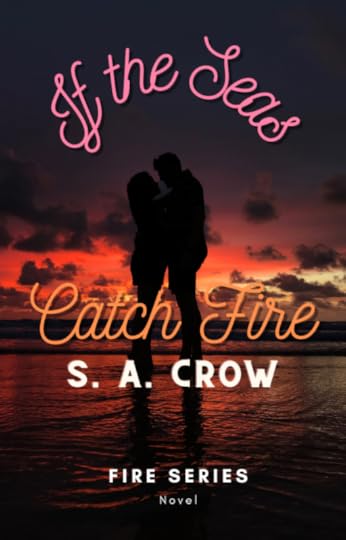



May 8, 2024
The Impact of Mindfulness on Creativity and Focus
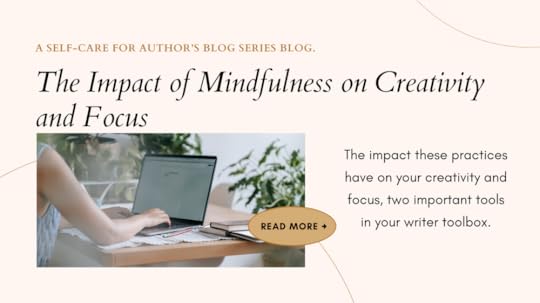 A Self-Care for Author’s blog series blog.
A Self-Care for Author’s blog series blog.We’ve delved into mindfulness and self-care for writers and authors in this blog series. Today’s blog post focuses on the impact these practices have on your creativity and focus, two important tools in your writer toolbox.
Mindful writing practices opens a doorway to an amazing journey for writers to deepen our craft and enhance our well-being. It’s so much more than getting your booty in the seat or touching pen to paper, it’s creating awareness of the moment and your intention. Doing this, you can build a connection between mind, body, spirit, and creativity.
Exploration of how mindfulness cultivates creativity:Mindfulness cultivates creativity through our subconscious mind in practices like;
The technique known as Morning Pages, which was popularized by Julia Cameron in her book “The Artist’s Way,” may be familiar to you. This daily writing exercise serves as a powerful tool for writers to override their inner critic, giving them direct access to the unprocessed thoughts and ideas that originate from their subconscious mind.
https://youtu.be/0NtqKxYu9pg?si=7b2IeszzP4oD_0y0
Free writing is a technique that lets writers express their thoughts without any restrictions or criticism. Set a timer for a designated period, such as 10 or 15 minutes, and write continuously without stopping. This process helps writers access their creativity and intuition by bypassing their analytical mind and tapping into their subconscious.
https://youtu.be/Cy65IlLkFm8?si=0uVI1u3mnN4m39Zk
One of my favorite free writing practices is called 5-min writing. This is similar in the fact that you set a timer for 5 minutes but instead of relying on your own thoughts you pick a prompt to use.
Mindful observation is being aware of surroundings and inner experiences without judgment. Mindful observation involves sensory experiences and reflection for writers. Being mindful allows writers to uncover fresh ideas and connections from their subconscious.
Keeping a dream journal is a powerful way to access the rich tapestry of imagery and symbolism that emerges from the subconscious mind during sleep. Upon waking, writers can jot down any dreams or fragments of dreams they remember, along with any associated thoughts or emotions. Exploring the themes and motifs in their dreams can help writers understand their inner psyche and find inspiration for their writing.
Mindful meditation is about focusing on your breath, body sensations, or other things to be aware of. By cultivating a regular meditation practice, writers can quiet the chatter of the mind, cultivate inner stillness, and create space for the wisdom of the subconscious to emerge. Insights, ideas, and creative solutions may arise spontaneously during meditation or in the moments of quiet reflection that follow, providing writers with fresh perspectives and inspiration for their work.
The impact of mindfulness techniques on one of the most common challenges for writers, creative or writing blocks. A creative or writing block can develop for many reasons;
We covered some practices in the first blog in this series. Mindful writing boosts creativity and focus.
Research on the connection between mindfulness and creativity has grown in recent years, providing insights into how mindfulness practices can enhance creative thinking and problem-solving abilities. While the field is still evolving, several studies have yielded promising findings:
Experts in the field of mindfulness and creativity offer insights into the mechanisms underlying this relationship and its practical implications:
Dr. Ellen Langer, a renowned psychologist and mindfulness researcher, emphasizes the role of mindfulness in promoting cognitive flexibility and breaking cognitive habits that can inhibit creativity. She suggests that mindfulness cultivates a state of “mindful creativity,” characterized by openness, curiosity, and a willingness to explore new possibilities.
Dr. Scott Barry Kaufman, a cognitive psychologist and creativity researcher, highlights the importance of mindfulness in enhancing self-awareness and emotional regulation, which are essential components of the creative process. He suggests that mindfulness practices can help individuals overcome self-doubt, fear of failure, and other psychological barriers to creativity.
Dr. Amishi Jha, a neuroscientist and mindfulness researcher, explores the neural mechanisms underlying mindfulness and its impact on attention, cognitive control, and creativity. She suggests that mindfulness training can enhance attentional capacities and cognitive flexibility, leading to improvements in creative thinking and problem-solving abilities.
Research and experts agree that mindfulness can boost creativity by increasing flexibility, self-awareness, and creating a conducive flow for creative expression. Mindfulness is gaining recognition for its ability to enhance well-being and cognitive functioning. It’s also being explored for its potential to unlock creativity and innovation.

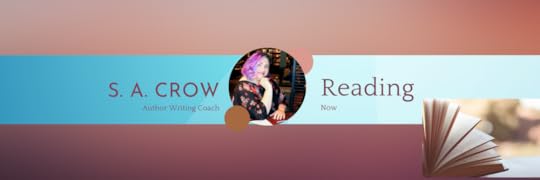

And always Stray Kids


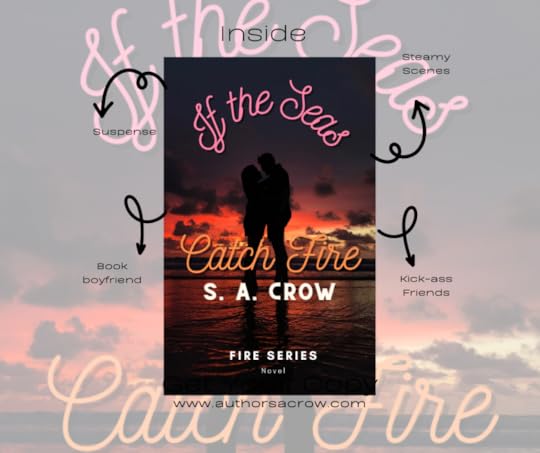
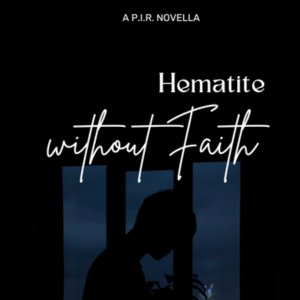
April 30, 2024
Mindful Writing: Boost Creativity and Focus with These Techniques

I’m so glad that you’ve joined me for our newest blog in the self-care for writers series. This time we are going to talk about cultivating a mindful writing practice. Self-care is essential for everyone and especially for authors and writers.
Blog 1 The Write Way to Self-Care
Blog 2 Navigating the Depths
The concept of a mindful writing practice is a way to deepen your craft and enhance your well-being. Mindful writing goes beyond simply writing - it involves being fully present and aware in the moment. By incorporating mindfulness into your writing, you can create a deeper connection between your thoughts, body, and inner self for a more genuine writing voice. This practice encourages you to engage fully in each word, sentence, and scene. Fostering this practice can enrich your writing and nurture your mental and emotional well-being. Let’s get into it!
Cultivating Mindfulness for WritersMindfulness in writing is about being fully present and non-judgmental while writing. It involves being fully immersed in the act of writing. To stay connected to the creative process, it is important to be mindful in writing without getting overwhelmed. Engaging in mindful writing boosts creativity, focus, and a deeper connection to the craft.
The benefits of a mindfulness practice:
By practicing deep breathing and sensory awareness, writers can enhance their focus and concentration on their tasks. Training the mind to stay grounded in the present moment. Minimize distractions and increase concentration periods for more productive writing sessions or sprints.
Reduced stress and anxiety. Being a writer often includes feelings of stress and anxiety. The techniques of meditation, mindful breathing, can help reduce stress and anxiety. It gives you a sense of calm, clarity, and perspective.
Enhanced creativity and inspiration. By opening a door to your inner creative well by encouraging curiosity and openness. You can unlock new perspectives, solutions, and expressions of creativity.
Improved emotional resilience. Writing can be an emotionally demanding job. Encountering rejection, criticism, and self-doubt. These practices help you become emotionally resilient by developing a calm awareness of your thoughts and emotions. Teaching you to approach setbacks with composure, bouncing back from setbacks, and face challenges with calm.
Heightened clarity and insight. It encourages you to observe your inner experiences with a new insight. By doing this, you gain a deeper awareness of your thoughts, emotions, and senses. Gain greater insight into your characters, plots, themes, enriching depth and authentic writing.
Known mindfulness practicing authors:
Anne Lamott: Renowned author of “Bird by Bird” and “Operating Instructions,” Anne Lamott frequently incorporates mindfulness into her writing practice. She emphasizes the importance of staying present and attentive to the small details of everyday life, which she believes enriches her writing with authenticity and depth.
Natalie Goldberg: Author of “Writing Down the Bones” and “The True Secret of Writing,” Natalie Goldberg is a strong advocate for mindfulness in writing. She often incorporates Zen meditation and mindfulness practices into her workshops and encourages writers to cultivate a deep awareness of their inner experiences to fuel their creativity.
Jon Kabat-Zinn: While primarily known for his work in mindfulness meditation and stress reduction, Jon Kabat-Zinn has also written books on mindfulness and creativity, such as “Wherever You Go, There You Are.” He emphasizes the importance of mindfulness in all aspects of life, including writing, as a means of fostering greater clarity, insight, and creative expression.
Elizabeth Gilbert: Best known for her memoir “Eat, Pray, Love,” Elizabeth Gilbert has spoken about her use of mindfulness practices, such as meditation and mindfulness-based stress reduction, to support her writing process. She believes that cultivating mindfulness helps writers to access their inner wisdom and creativity more effectively.
Pico Iyer: Author of numerous books and essays on travel, culture, and mindfulness, Pico Iyer is a proponent of integrating mindfulness into daily life and creative pursuits. He often writes about the intersection of mindfulness, writing, and the importance of slowing down to savor the present moment.
Practical techniques for incorporating mindfulness into writing ritualsMindful breathing exercises
Find a quiet and comfortable space. You want to sit comfortably with a straight back or lie down. This practice can also be done while walking or doing other activities.
Focus on your breath. Engage your sense of touch to focus on your breath, feeling the air enter and leaving your body. Fall into the sensation of your breath filling and leaving your chest, belly, or nose.
Let thoughts flow without grasping. Like clouds, you can let your mind wander, but don’t focus on one thought. In order to refocus, bring yourself back to your breath.
Use a cue to bring yourself back to focus. If you grasp and holding a thought, go back to focusing on your physical sensations.
Start with quick sessions and gradually increase your time practicing mindful breathing exercises.
Give yourself a hug.
Take a few deep breaths, inhaling deeply and exhale slowly, hugging yourself from the inside.
Box breathing.
Inhale deeply through your nostrils for a count of three, hold for three beats, and exhale slowly through your mouth for a count of four.
There are some great videos to help

Bringing breathing exercises into your writing routine offers you these benefits.
Enhanced focus and concentration
Stress reduction and relaxation
Increased energy and vitality
Improved emotional regulation
Enhanced creativity and inspiration
Adding these exercises to your writing routine helps improve your creativity, focus, and well-being.
Sensory Awareness Techniques
Ground yourself with your senses
LiveScience has an article on The Five (and more) Human Senses by Alina Bradford, Alisa Harvey. Taking the time to learn more about your sensory awareness can enrich your writing.
Nature Mentoring article 8 Amazing Sensory Awareness Exercises by Brian Mertins
Sense Meditation
Blindfolding
Going Barefoot
Mental Snapshots
Stillness
Imitation
These exercises can teach you how to add sensory elements to your writing, make your characters more relatable, and create more detailed descriptions.
Mindful Writing Prompts
Using writing prompts is nothing new, but finding mindful writing prompts can encourage creativity and mindfulness.
Sensory Exploration: “Close your eyes and imagine yourself in a place you love. Focus on the sensory details: the scent of the air, the texture of the ground beneath your feet, the sounds surrounding you. Now, write a scene set in this place, capturing the richness of the sensory experience.” This prompt encourages writers to engage their senses and cultivate mindfulness by immersing themselves in vivid sensory imagery, leading to more evocative and immersive storytelling.
Stream of Consciousness: “Set a timer for ten minutes and write without stopping, allowing your thoughts to flow freely onto the page. Don’t worry about grammar or punctuation—just let your words spill out uncensored. Pay attention to your thoughts and feelings and include them in your writing. It can help writers access deeper layers of insight, authenticity, and emotional resonance in their writing.
Character Exploration: “Choose a character from your current work-in-progress or create a new character from scratch. Write a journal entry from their perspective, detailing their thoughts, feelings, and experiences in a moment of conflict or reflection. Dig deep into their motivations, fears, and desires, exploring the complexities of their inner world.” This prompt invites writers to practice empathy and perspective-taking by inhabiting the minds of their characters with curiosity and compassion. It can deepen character development and foster a deeper understanding of human nature.
Visual Inspiration: “Find a picture or image that resonates with you. It could be a photograph, painting, or even a snapshot from a magazine. Take a few moments to study the image closely, noticing the colors, shapes, and emotions it evokes. Now, write a story inspired by this image, using it as a springboard for your imagination.” This prompt encourages writers to engage with visual stimuli mindfully, drawing inspiration from the world around them and translating it into narrative form. It can stimulate creativity, expand perspective, and fuel storytelling with fresh ideas and imagery.
Gratitude Journaling: “Reflect on something you’re grateful for in your life right now. It could be a person, a place, or a simple moment of joy. Write a letter expressing your gratitude, describing why this person or thing is meaningful to you and how it enriches your life. Allow yourself to savor the feelings of appreciation and abundance as you write.” This prompt cultivates mindfulness and emotional well-being by directing writers’ attention towards gratitude and appreciation. It can foster a sense of positivity, resilience, and connection, infusing writing with heartfelt sincerity and authenticity.
Prompts help you stay present, become more self-aware, and unleash your creativity.
A Mindful EnvironmentCreate a creative space for writing and mindfulness. That also minimizes distractions and encourages focus. Here are a few tips to get started.
Declutter and organize.
Comfortable setting.
Personalize your space.
Create a ritual. Establish a ritual to signal the beginning or your practice. Like lighting a candle, mediation or breathing exercises before you begin. Or something as simple as taking a few moments to center yourself. You can find ways to help with this with my Pagan Author Planner and Journal both Northern and Southern hemispheres.
Limit distractions.
Engage your senses.
Prioritize comfort and ergonomics.
Set intentions. What are your intentions for your writing practice? Encourage positive energy and intention in your space. Write out your goals for each writing session. Find motivation elements to focus on. Pick up a copy of my 30 day Manifestation worksheet for only a $1 or free for my subscribers.
Tips for minimizing distractions and fostering focus.
Designate as much of a distraction-free-zone as possible.
Set clear boundaries.
Turn off notifications.
Create a writing routine.
Break tasks into manageable chunks.
Use time management techniques.
Practice mindful breathing.
Eliminate clutter.
Stay hydrated and energized
Practice self-compassion.
Enhance your productivity and creativity by implementing these strategies for a mindful and focused writing environment.
Deepen your craft and enhance well-being through a mindful writing practice. Mindful writing goes beyond the act of writing itself; it involves fostering a heightened sense of the present moment, empowering writers to approach their creativity with clarity and purpose. When you incorporate mindfulness into your writing, you foster a deeper connection between your thoughts, body, and inner self, which produces a more genuine writing style. This practice promotes full engagement in every word, sentence, and scene. Cultivating this habit can enhance your writing skills and promote your mental and emotional well-being.
Join us next time as we explore the power of mindfulness in unlocking the subconscious, overcoming creative obstacles, improving focus, and maintaining momentum and productivity.





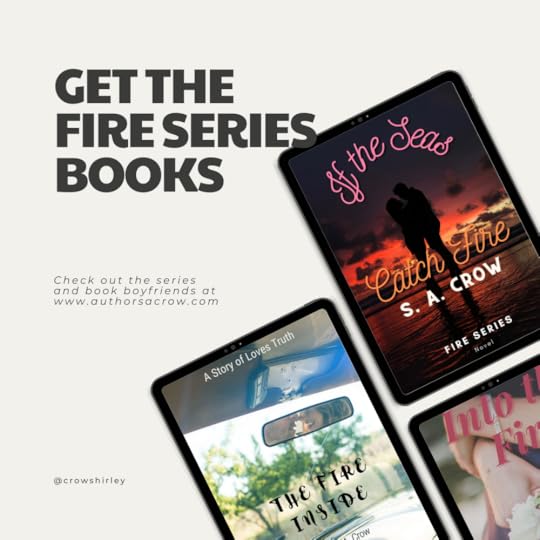

April 24, 2024
Exploring the Legacy of E. A. Poe
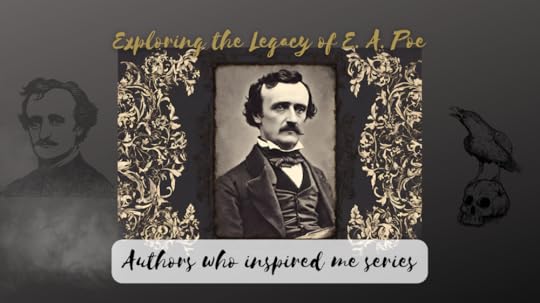 Authors who Inspired Me, blog series.
Authors who Inspired Me, blog series.Thank you for checking out the latest blog in my Authors Who Inspired Me series. This series has become a labor of love. As I slide back in time to the authors who impacted my youth. Many of you might know that I was extremely lucky to have parents who didn’t censor my reading choices. I was not told that a novel was beyond my reading level or something inappropriate for me to read.
Everything we read affects us, and often in different ways as we grow and change. Something I read as a child will have a new meaning for me as an adult. This is one reason I don’t say I dislike an author or their work to someone if I can help it. Because it’s not the author or the story, it’s me and how I interact with the work.
This author is one of my all-time favorites and I learn something new about him every time I read his work. I can’t remember the first time I found his work, but I know it was his most famous work, The Raven, of course. After that I found the Vincent Price horror series of movies based on his work and fell in love with more of his work. The children’s television show Wishbone introduced me to his detective story, The Purloined Letter. Yes, I watched Wishbone even though I wasn’t a child anymore. I grew up on PBS and continued watching shows there even after I grew up.
If you haven’t guessed yet by the clues above. It’s none other than the American writer, poet, editor, and literary critic Edgar Allan Poe. Best known for his poetry and short stories, he’s regarded as a central figure of Romanticism and Gothic fiction in the U.S.
Born Edgar Poe, January 19, 1809 in Boston, Massachusetts and finally found rest on October 7th, 1949, ages 40 in Baltimore, Maryland at Westminster Hall and Burying Ground, Baltimore. Edgar Poe’s early life was filled with abandonment, loss, and lack of support.
He published his first collection, Tamerlane and Other Poems, while he enlisted in the U.S. Army under an assumed name. Later, he married Virginia Clemm, who passed away from tuberculosis in 1847.
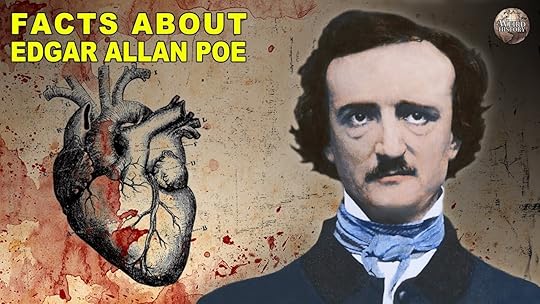
In January 1945, he published the poem he is most known for, The Raven, and it was an instant success.
Poe’s work influenced literature not only in his native country, but worldwide. He was quite famous in Paris. He impacted fields like cosmology, cryptography, and like Jane Austen, modern day literature, movies, and art.
He is an iconic figure and is renowned for his exploration of the dark corners of the human psyche. Poe made important contributions to different types of literature, leaving a lasting impact on the literary world. His writing spanned across short stories, poetry, and literary criticism. Poe’s works are defined by a pervasive sense of mystery, horror, and the macabre. He frequently explored gothic fiction, creating complex and eerie stories with deep psychological themes. Themes such as death, madness, and the supernatural are recurrent throughout his writings, with motifs like the duality of human nature and the inevitability of fate being prominent. Poe’s impact on the development of literary genres is profound; his works laid the foundation for what would become the modern horror and detective fiction genres. His pioneering efforts in these fields not only set the standard for subsequent writers but also inspired generations to come, cementing his legacy as one of the most influential figures in the history of literature.
My ReflectionsThe most striking memory I have with Poe is reading his The Raven while listening to classical music as I was alone at home on a stormy night. Needless to say, it was the most terrifying experience I’ve had while reading in my life. The only other literary work that has as close is the poem Jabberwocky recited in the 1985 rendition of Alice Through the Looking Glass by Lewis Carroll.
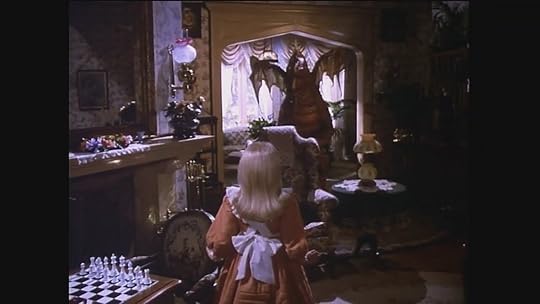
If you want to experience tingles and goosebumps, listen to these voices read The Raven to you.
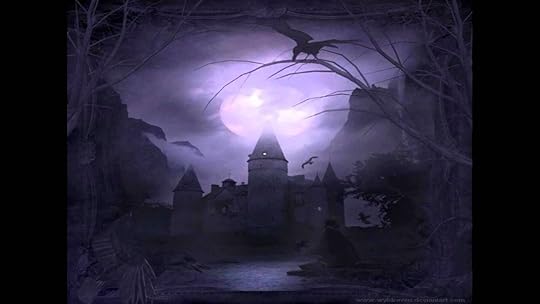
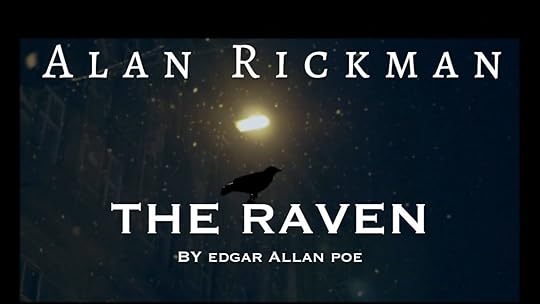

In college, I wrote an essay about how Edgar Allan Poe’s story, “The Tell-Tale Heart,” showed an understanding of certain psychological disorders, like paranoid schizophrenia, before they were fully understood by specialists.
I would have a larger list of his works that I haven’t read but plan to, so I’ll share the ones I’ve read so far.
The Black Cat
The Cask of Amontillado
The Fall of the House of Usher
The Masque of the Red Death
The Murders in the Rue Morgue
The Pit and the Pendulum
The Purloined Letter
The Tell-Tale Heart
Annabel Lee
Lenore
The Raven
This towering figure in American literature has inspired me along with so many. His sense of mystery, horror, and the macabre left a mark on me and will continue to do so for the rest of my life. He laid the foundation for what would become modern horror and detective fiction genres.
I can’t wait to chat about these authors and more in this on going blog series.
I wonder how many will say The Simpson’s Halloween episodes.



Minato Shouji Coin Landry Season 2




April 17, 2024
Strings of Inspiration: Exploring My Journey into Guitar Playing

Even though I’m a full-time indie author, I can’t spend my whole life focused on the written word. I’m a big believer in learning something new that will challenge my mind, body, and/or push me past my comfort zone. While in college studying psychology at Texas Wesleyan University, Fort Worth, Texas. We, as students and members of Psi Chi, the national honor society in psychology, were granted the ability to sit in and listen to possible professor presentation and interview them a bit for our department. One potential professor specialized in neuroscience. That presentation and interview left an impact on me and my philosophy on learning as an adult.
Picking a new skill increases the white matter (myelin) in your brain, improving your performance on tasks. New skills stimulate neurons to form new pathways and electrical impulses travel faster. This can help delay dementia. (Brian Wong, How Learning a New Skill Helps Your Mind Grow Stronger, Inc.)
This belief has led to me picking up a new skill or hobby every year or so. I’ve done a few things but recently I picked up playing the guitar. During grades 6 and 7 in middle school, I played the clarinet in the school band. I choose to learn music to be a more well-rounded person, yes that is what I said when I picked music. Now mind you, the clarinet wasn’t my choice of instrument. It was one of the two choices my father presented to me. I wanted to learn the cello instead. I love low sounding instruments and voices.
New Passion:
As I said, I love low sounding instruments. I first wanted to learn to play the bass guitar. I priced a few and waited to see what I could get my hands on. While I was waiting, my roommate lent me her grandfather’s Fender acoustic guitar to practice on. It is a lovely guitar, and I learned so much working on it, but I was so fearful that I could do something wrong to this priceless family guitar I looked to get my own.
I was lucky to get a guitar as a holiday present. You can catch a glimpse of my purple and black baby in my new office set up images or on my YouTube Live videos.

The Journey Begins
I’m learning chords through a youtuber teacher Marty Music.
I learned two chords in the first video and still remember them and they built the base for the next two I’ve learned. I can’t wait to learn more and play a favorite song.
Together, we can celebrate the joy of exploration and personal growth through shared interests.



I Feel You Linger in the AirKingdom: Legendary War tv showLove is Better the Second Time Around
Unknown


April 10, 2024
The Writer's Lifeline
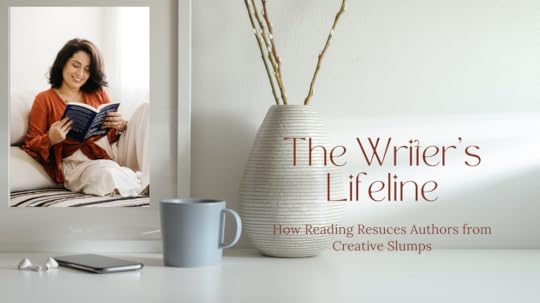
This blog is all about the symbiotic relationship between authors and the timeless art of reading. We will discuss why reading serves as an indispensable tool, talking about how it can nurture creativity and storytelling. Don’t worry, it’s normal to fall into a reading slump. We’ll offer reasons it happens and offer tips to overcome reading slumps. I also want to challenge conventional wisdom by looking at alternative media that inspire authors. If you’re looking to reignite your passion for reading or looking for ways to break free of the slump, join us as I navigate the boundless world of literature and its ties to creativity.
We’ll begin by looking into why reading is a tool for writers, uncovering its ability to fuel creativity. Then, we’ll dive into the reading slumps and why they happen and talk about some tips and tricks on how to pop yourself out of these slumps. We will last challenge the traditional norms by looking into how other forms of media can offer the same inspiration for authors.
Why reading is an important tool?
As writers, we desire to tell a story and share it even if we are nervous about what others will think about our work. For some of us, this desire stems from reading or listening to stories as children. As a child, I had parents and grandparents who read in their free time. This created a belief that reading was a part of daily life. Those same parents gave that love of reading for pleasure to me by letting me pick my own books to read.
I have met fellow authors that were late to reading for enjoyment, and yet they still felt the urge to share their own worlds and stories with others.
Sakshi Nadkarni wrote a strong article for Gobookmart.com on Why Reading is as Important as Writing for Authors?
They give these reasons it’s important to authors;
helps authors find their own voiceThe voice of the writing is characterized by its carefully chosen vocabulary, distinct tone, unique point of view, and intentional sentence structure. There are three distinct types that it comes in. The author’s voice, character’s voice, and narrator’s voice each bring a unique perspective to the story. (What is Voice in Writing?, Jennifer Betts, B.A., YOURDICTIONARY)
identify what you like and dislikeWhat genre do you like? What genre do you write in? What plot points, troupes, settings do you like is so important.
inspiration
helps writers pick up the nuance of language
You can come across types of language you may not be familiar with. Various factors can influence language, like idioms, accents, regional speech patterns, education levels, and personality traits.
the advantage of lessons already learnedBy reading, you can tap into others’ experiences and make more informed decisions. It’s a mixed bag, with some things clicking into place effortlessly while others fall flat. I’m talking about how the public responds to it, the criticism it faces, and the process of writing it. Understanding the nature of these elements and their significance is crucial for effective writing. Writers primarily write for the love of the craft, rather than seeking publicity or fame, but it’s essential to be aware of the challenges.
boost vocabularyI’m personally a dyslectic author, it affects my spelling and sometimes my sentence structure. Yet I’ve always been a voracious reader from a young age. I credit this trait to my large vocabulary and my high reading comprehension scores.Seven ways readers think differently than non readers.
Readers have more white brain matter, it helps improve the health of your brain. The language area of the brain increases, exercises multiple cognitive functions and increases blood flow to different parts of the brain.
Empathy
Have longer attention spans
Readers consider backstory. They more often consider context and backstory before making snap decisions.
Readers will choose to read over anything else. Sometimes spending all night reading a book they’ve been waiting for.
Budget with books in mind
You’ve Got Mail’s character Kathleen Kelly: “So much of what I see reminds me of something I read in a book, when shouldn’t it be the other way around?”(7 Ways Readers Think Differently than Other People, E. Ce Miller, Bustle)
Gain information on your genre and its trendsIt’s a form of research;Topics and how themes are usedDevices used to better writingFlashbacks, conflicts, resolution, scene-setting
Understand writing from a reader’s perspectiveSome of you might be familiar with the phrase reading as a reader vs. reading as a writer. I have also watched a movie or show as a writer vs. just watching as a viewer.
Builds empathyCapacity to understand or feel what another person is experiencing from within the latter’s frame of reference.
Slumps aren’t just for Sports.
A reading slump is when your desire to read or your satisfaction in reading is low or non-existent. Some causes for a slump can include; reading multiple books at once, picking heavy books like classics, trying or feeling forced to read a book you don’t like, big life changes, too much of one genre. (Reading Slump Tips, Alex Portee, Today)
Some other causes can be burnout, stress, and distractions from other media or life.
These slumps can impact a writer’s productivity and creativity. Not only do they disrupt the flow of inspiration, but also hinder the development of storytelling skills. Looking at the common causes of reading slumps, it’s no wonder that a writer’s productivity and creativity could take a hit.
Let’s break the rules.
Exploring different mediums for inspiration can sometimes lead to a reading slump, but the impact may not be as significant. Some mediums that can offer similar inspiration, empathy, and perspective include:
Movies
TV shows
Computer and/or console gaming
Role play gaming with friends
Animation shows, shorts, and movies
On my Saturday writing and productivity live stream on YouTube on April 6, 2024. I asked my viewers, Other than reading, what type of media inspires you to write? And a viewer Kay Parquet said she gets inspiration from movies, games, and anime.
Rachel D. Adams, our Writer of the month from racheldadams.com, got the idea for her book series by playing role-playing games with co-author Dawn McClellan.
So you might not be reading, but you are gaining the same insights by consuming other mediums.
But, I’m not reading or doing the other stuff.
Here are some tips to pop out of that slump from Reading Slump Tips, Alex Portee, Today
Pick up shorter books
Books in verse might help
Try an audiobook while you clean, drive, or exercise
Reread old favorites. My favorite choice.
Head to the library and look or take a suggestion.
Immerse yourself in fiction
Watch a new show everyone’s talking about
Find a role play gaming group in your area. Try gaming stores for information.
Explore a new genre.
Hey you!



This is from mydramalist.com

Enhypen- Drunk-dazed
Enhypen= Sweet Venom
Felix cover of Fix You- Coldplay
Enhypen cover of I Need U- BTS
The Boyz- Nectar
TXT- deja vu
Onlyoneof- Evergreen
Onlyoneof- Love me
Benson Boone- Waht do you Want
Led Zeppelin- No Quarter
NSB- Sunshine
Kinryy cover of Shinunoga e-wa- Fujii Kaze
Lisa- Say Goodbye
Chevelle- Red
Enhypen- Bite me
The Rampage from Exile Tribe- The Power
Julia Michaels- Heaven
Hasley= Without Me
April 3, 2024
Navigating the Depths: Understanding Mental Health Challenges for Authors
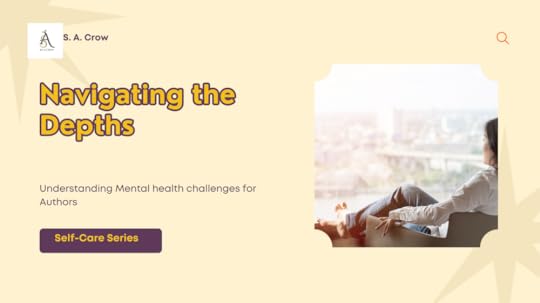
This is the second installment in my “Self-Care for Authors series” of blog posts. You can find the first one in the series The Write Way to Self-Care: How Authors can Prioritize Wellness in their Writing Routine post. Let’s explore the mental health challenges that authors face and come up with self-care strategies to tackle them.
I’ve encountered some mental health challenges in my four years as an author. I’ve faced various issues like depression, self-imposed deadlines, burnout, anxiety, rejection, and feeling overwhelmed.
Many authors face issues like anxiety, depression, and imposter syndrome in the writing community. I hope that in this blog post you can see that you are not alone and find some ways to cope with these common mental health struggles.
The Writer’s Mind: Common Mental Health ChallengesLet’s look into the writer’s mind and dive deep into the challenges that we face.
Anxiety
Anxiety can be related to deadlines, writer’s block, and performance pressure. We’ve all been there the blank screen or white sheet of paper that mocks you.
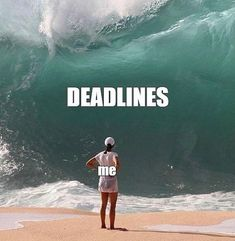
According to the National Institute of Mental Health NIH, occasional anxiety is a normal part of life. When anxiety is more than temporary worry or fear, you might have an anxiety disorder. This is when the anxiety does not go away and can get worse.
Some symptoms of anxiety:
Feeling restless, wound-up, or on-edge,
Being easily fatigued
Having difficulty concentrating (foggy brained)
Being irritable
Having headaches, muscle aches, stomachaches, or unexplained pains.
Difficulty controlling feelings of worry
Having sleep problems, such as difficulty falling or staying asleep
What are some of the risk factors for anxiety?
genetic and environmental factors can contribute to the risk of an anxiety disorder and vary for everyone;
shyness
feeling distressed or nervous in new situations or new projects
exposure to stressful and negative life or events
a history of anxiety in biological relatives
Depression
Aka major depression, major depressive disorder, or clinical depression. Is common and it can cause severe symptoms affecting how you feel, think, and handle daily activities; like sleeping, eating, or working.
According to the NIH, doctors diagnose women with depression more often than men.
Wordsrated.com has a great Author Demographics article where they collected author statistics from the publishing industry and as of 2021 50.45% of authors identify as women and 49.55% identify as men.
This doesn’t mean men are less likely to be depressed but that they are more likely to not recognize or talk about depression.
Studies show higher rates of depression in the LGBTQI+ community.
What can depression look like:
Persistent sad, anxious, or “empty” mood
Feelings of hopelessness or pessimism
Feelings of irritability, frustration, or restlessness
Feelings of guilt, worthlessness, or helplessness
Loss of interest or pleasure in hobbies and activities
Decreased energy, fatigue, or feeling slowed down
Difficulty concentrating, remembering, or making decisions
Difficulty sleeping, waking early in the morning, or oversleeping
Changes in appetite or unplanned weight changes
Physical aches or pains, headaches, cramps, or digestive problems that do not have a clear physical cause and do not go away with treatment
Thoughts of death or suicide or suicide attempts
Increased anger or irritability
Feeling restless or on edge
Becoming withdrawn, negative, or detached
Increased engagement in high-risk activities
Greater impulsivity
Increased use of alcohol or drugs
Isolating from family and friends
Inability to meet the responsibilities of work and family or ignoring other important roles
Problems with sexual desire and performance
Depression can lead people to have negative thoughts about themselves and the world, which may include thoughts of suicide or self-harm.
Imposter Syndrome
Is the experience of feeling like a fake or phone despite any genuine success, and is common. Check out Verywellmind’s article on Imposter Syndrome and Social Anxiety disorder
Imposter Syndrome can look like
consistent self-doubt
nervousness
negative self-talk
perfectionism
feelings of worthlessness
Imposter syndrome is not an officially recognized mental illness. It’s a term used to describe feeling insecure and doubting one’s intelligence and success. Perfectionism and social factors influence it.
It’s usually linked to things like family dynamics, low self-confidence, anxiety, and gender expectations.
Cultivating Resilience and Self-CompassionResilience is the ability to adapt and bounce back from tough experiences by being flexible and adjusting to what’s happening around you.
Self-compassion means showing kindness to yourself when you feel like you’re not good enough, when you fail, or when you’re going through a tough time.
Both of these skills can be cultivated and practiced. Helping a person engage with the world, and their quality of life, by developing coping strategies.
The American Psychological Association (APA) has an article on building your resilience available here.
Dr. Kristin Neff has a Self-Compassion Test you can take here. I’ll share my results on my social media this week. Along with some self-compassion practices for you to use and learn here.
Of course don’t forget to practice self-care rituals to help cultivate resilience and self-compassion like;
meditation
pep-talks
seek social support
Managing Stress and Anxiety
Explore techniques for managing stress and anxiety specific to the writing process, such as:
Mindfulness meditation to calm the mind and increase focus.
Deep breathing exercises to reduce physiological arousal.
Setting realistic goals and prioritizing tasks to alleviate feeling overwhelmed.
The last is so important. We often face deadlines for projects. Whether others dictate these deadlines or ourselves, they can cause stress and anxiety as the due date looms large in our mind. When I wrote my first novel in my fire series Into the Fire back in 2000. I set an unrealistic deadline of finishing the edits and format done in less than six months. As a new author with dyslexia, I didn’t realize that the editing process would take me longer and require multiple passes before I could even think about formatting. When I couldn’t attain this goal, I fell into a deep depression and contemplated giving up.
Lucky for myself and my readers, I didn’t give up. Instead, I set more achievable goals and asked my friends for help. Now, I have three published novels in the series and I’m currently working on my urban fantasy series using the pen name Ann Crow.
Rejection and criticism, whether helpful or malicious, will be a part of every authors career. Researchers have found evidence that being rejected isn’t so different from the pain of physical injury. It has a serious impact on your psychological state and can influence emotion, cognition and even physical health.
Some people are more sensitive to rejection than others. People who have rejection sensitive are so fearful of rejection that it can impact their daily lives. This is also known as Rejection sensitivity. I recommend checking out verywellmind’s article on this topic.
It may take time, but you can heal and get over the pain and hurt feelings. So what can we do?
Learn to decipher rejection letters. Some rejection letters from literary agents aren’t helpful but instead vague, and brief. Remember that when someone is reading your work their interpretation is often based on a feeling they get about your work. We all know that feelings are fickle and can be affected by outside stimuli.
So as Nathan Bransford of nathanbransford.com article says
10 surprising facts about rejection from Psychology Today
Rejection piggybacks on physical pain pathways in the brain
Tylenol reduces the emotional pain rejection elicits
Rejection served a vital function in our evolutionary past
We can relive and re-experience social pain more vividly than we can physical pain
Rejection destabilizes our “need to belong”
Rejection creates surges of anger and aggression
Rejections send us on a mission to seek and destroy our self-esteem
Rejection temporarily lowers our IQ
Rejection does not respond to reason
There are ways to reate the psychological wounds rejection inflicts
Coping strategies for dealing with rejection and criticism like:
Reframe failure as a learning opportunity
Build a supportive network of fellow writers and mentors like a writing group
Engage in activities outside of writing to maintain perspective and resilience
Incorporating Mental Health Practices into the Self-Care RoutineWe’ve talked about several strategies to help mental well-being and creativity like
cultivating a growth mindset
practicing self-care rituals
seeking social support
meditation
deep breathing exercises
setting realistic goals
prioritizing tasks
reframe failure as a learning opportunity
building a supportive network
engaging in activities outside of writing
normalizing the idea of seeking help
Join forces with your support or writing group to devise a self-care plan that incorporates mental health practices.
mindfulness exercises
self-compassion affirmations
regular check-ins
to suggest a few ideas to get you started.


I finished watching
A Little Room for Hope
Our Dining Table
Still watching
Unknown
Kingdome
Word of Honor
Spring is Green from a Distance
Deep Night
My Demon
Dead Best Friend Forever
Something in the Rain
From Me to You
Gameboys
Playyboys

Another Love-Tom Odell
Flowers- Miley Cyrus
Sherlock cover- Stray Kids
Oasis- Sam Smith
Marry You- Bruno Mars
It will Rain- Bruno Mars
Locked out of Heaven- Bruno Mars
Your World, My World- First and Khaotung
Chronosaurus- Stray Kids
https://youtube.com/playlist?list=PLGs8q5SMjt1dhFrC_Mb58vvIdT9SkNtId&si=xx43GJCjL3fluqcT
March 27, 2024
In the Shadows of New Orleans
 Authors that Inspire Me series
Authors that Inspire Me seriesThis is the third installment in my “Authors that Inspired Me series” of blog posts. You can find the first two in the series “Bertrice Small” and “Amanda Quick” posts. I’ve been a voracious reader all of my life, it came from growing up with readers and not being censored in my reading material. This blog series is a way in which I can share with you all the authors who inspired me in life and in my passion to become an author myself.
The Woman and MythToday’s author almost needs no introduction. She’s one of the most famous New Orleans authors, “Anne Rice”. Many people today are familiar with Anne Rice for being the author of the first in her Vampire Chronicles series “Interview with the Vampire”. The novel that has recently turned into a television series started in 2022 on AMC starring Jacob Anderson as Louis and Sam Reid as Lestat. It was also a motion picture starring Brad Pitt and Tom Cruise in 1994.
The Vampire Chronicles series comprises the titles; Interview with the Vampire, The Vampire Lestat, The Queen of the Damned, The Tale of the Body Thief, Memnoch the Devil, The Vampire Armand, Merrick, Blood and Gold, Blackwood Farm, Blood Canticle, Prince Lestat, Prince Lestat and the Realms of Atlantis, and Blood Communion.
I’m choosing to talk about Anne Rice’s novel “Interview with the Vampire” because it was the book that made me fall in love with a city and introduced me to gothic vampire fiction. At around the age of seven or eight years old, I somehow got my hands on a copy of the audiobook narrated by Simon Vance. This also started my habit of listening to an audiobook at night, because I would fall asleep listening to Simon Vance read as Louis. Not too many years later, I picked up the hardback of the novel at a thrift store and read it yearly all the way to my senior year of high school.
Anne Rice, an American author, was born in October 1941 in New Orleans, Louisiana. She is famous for her influential vampire novels in the Gothic fiction genre.
Rice’s Catholic upbringing strongly influenced her writing, as she often explored themes of religion, morality, and existentialism in her works. She started her writing career in the 1970s under the name Anne Rampling, with the release of “Exit to Eden.” The book was later adapted into a romantic comedy featuring Rosie O’Donald and Dan Ackroyd. The novels under her Anne Rampling pen name explored themes of eroticism and psychological complexity. However, it was under her own name that she achieved worldwide acclaim with her groundbreaking novel, Interview with the Vampire, published in 1976.
She passed in 2021, but her legacy continues to inspire countless readers and remains an enduring testament to the power of storytelling. Throughout her career, her writing evolved beyond the vampire genre, encompassing historical fiction, supernatural tales, and religious explorations with notable works like “The Witching Hour”. Her impact on literature extends far beyond her written words. By fearlessly delving into taboo topics and infusing fantastical tales with profound philosophical insights, she has made a lasting impression on readers and writers.
The Big Gold Book
“Interview with the Vampire” was the first novel I read of hers and, of course, it goes without saying that it impacted my formative years. In the novel, Louis de Pointe du Lac becomes a vampire in 18th-century New Orleans. He later tells a young reporter about his experiences living with his maker, Lestat de Lioncourt. Lestat changes the child named Claudia into a vampire to keep Louis by his side, but this unknowingly starts a tragic story of yearning, love, deceit, and sadness.
While attending a graduate program in creative writing at San Francisco State University, her four-year-old was diagnosed with acute granulocytic leukemia. She died two years later and Rice fell into a deep depression, her daughter was the inspiration for the character Claudia.
While still grieving, she reworked a short story that was written from the interviewer’s perspective. That short story became the 338-page novel in five weeks’ time.
123HelpMe has a great article on the Critical Analysis of “Interview with the Vampire” talking about how Rice reinvented the vampire genre and introduced us to the gothic horror genre again.
Me, the book, author, and the city
In this series I’ve talked about how I feel so lucky that my family never censored my reading or watching content.
I’m sure that this is often a controversial topic, and I would love to hear about your take on this topic; comment on this blog.
As I mentioned earlier in this blog post, I read “Interview with a Vampire” when I was around seven or eight years old. I was a sophomore in high school when the movie was released. I was on a visit with family in California when the movie was available on video. The distinct memory of being up late at night as the movie started and the eager chills as I anticipated the movie in my head coming to life. Many of us have experienced this as book lovers, the excitement and then the shock of the reality. When I was younger, I didn’t understand that it was simpler to empathize with Louis if you believed his wife and child died in childbirth, rather than focusing on his brother’s illness and death for a long time.
“Interview with the Vampire” was my first introduction to gothic vampire horror fiction and started my love affair with all things goth, morbid, and the decadence of New Orleans, LA. I have to admit that I was spoiled by the riches of some of the best gothic male role models;
David Bowie- Jarid in Labyrinth Tim Curry- Darkness in Legend 1985 Brad Pitt- Louis in Interview with the Vampire Antionio Banderas- Armand Interview with the Vampire Christian Slater- J.D. Dean in Heathers, Mark Hunter in Pump Up the Volume, Adam in Untamed Heart Corey Feldman- Bobby Keller in Dream a Little Dream Brandon Lee- Eric in The Crow Michael Wincott- Top Dollar in The Crow Laurence Mascon- Tin Tin in The Crow Gary Oldman- Dracula in Bram Stolker’s Dracula, Ludwig van Beethoven in Immortal Beloved Johnny Depp- Edward in Edward Scissorhands Raul Julia- Gomez in The Addams Family Jason Patric- Michael in The Lost Boys Kiefer Sutherland- David in The Lost Boys Keanu Reeves- Don John in Much Ado About Nothing
The city I love. There has been a pull on my mind and heart for a chance to visit New Orleans, LA, since I was young. To be honest, I’m sure this book was more than likely the catalyst that opened the door for this obsession. I was married under a year when I got my first chance to truly walk the streets and banquets of the city of my dreams.
Have you ever visited a place that gave you an overwhelming sense of Home? I hadn’t until I stepped down and felt the history under my feet and saw the river move like blood in my veins. I was truly lucky that my husband at the time let me just wander. He had visited the city before, so he let my feet lead me where they would take me. I’ve tried to recreate the experience a few times, but nothing feels like home as much as the Crescent City.
I invite you to share your thoughts and experiences with her work. What impact has Rice had on your reading journey? Have you ever felt a similar connection to a city or place in literature? I’d love to hear your stories and insights in the comments below.
Don’t miss out on future blog updates! Subscribe to stay connected and join me on this journey through the worlds of literature and imagination. Be sure to share this post on social media and invite your friends to join the conversation.
Thank you for embarking on this literary adventure with me. Until next time, may you embark on a literary adventure filled with wonder and discovery.
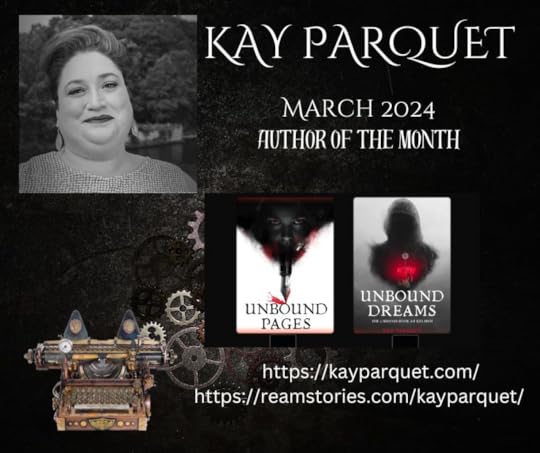


Word of Honor
Room for Hope
Deep Night
Unknown
Casting a Spell
Something in the Rain

Perfect Blues- Hannah Bahng
One of the Girls- The Weekend
Kissing Booth- North Star Boys
Lost- Michael Buble and the cover done by Lee Felix
Break My Heart Again- Finneas
A Little Braver- New Empire
Case 143- Stray Kids
Bibora- Sf9
Roar- The Boyz
Killing Me- iKon
I'll Be Your Man- BtoB
I See Red cover done by Corvyx
Slow it Down- Benson Boone
King Size Bed- Alec Benjamin
Motionless in White- Werewolf
I already know- Munn with Cooper Hill
Sorry, I Love You- Stray Kids
Long for You- Hyunjin
Hey You- Hyunjin
Dancing with your Ghost- Sasha Alex Sloan
Heather- Conan Gray
Broken by You- Alexander Stewart
"13"- Han
Connected- Bang Chan



